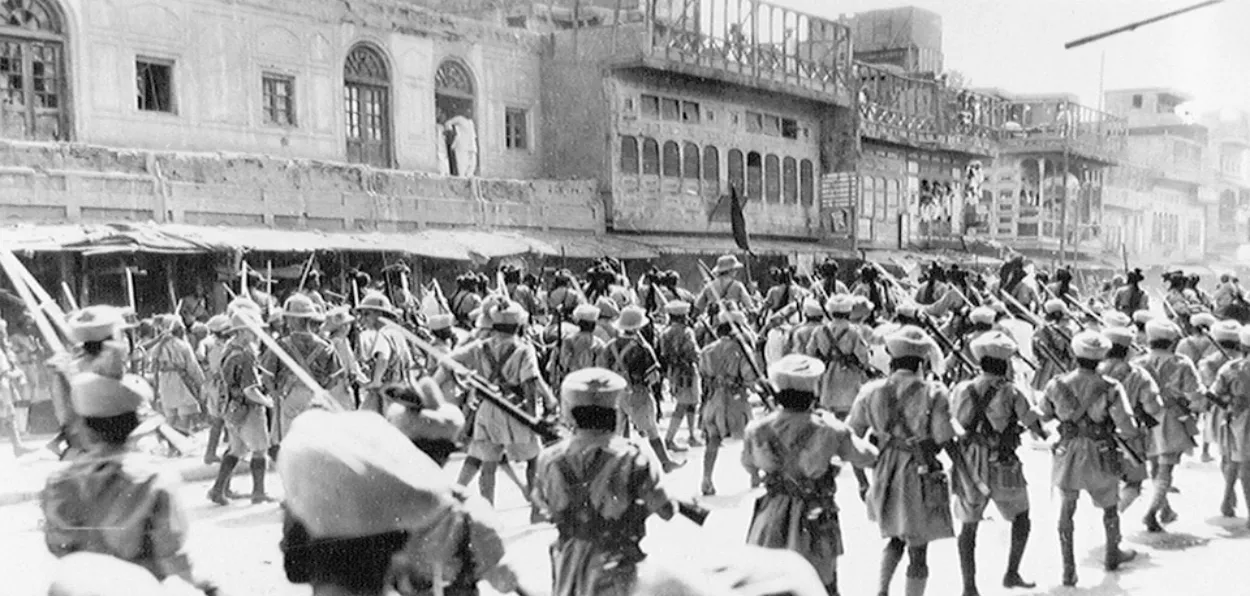
Saquib Salim
Sanobar Hussain, Sher Ali, Abdur Rahman Riya, Abdulla and Abdul Aziz were holding a secret meeting in February 1929 in Peshawar. The Indian freedom struggle, they believed, needed rejuvenation. With Sanobar as its president, they founded Anjuman Jamiat Naujawanan–i-Sarhad (Association of frontier youth). The aim was to revitalize nationalism in Peshawar by bringing Hindus and Muslims together and engaging in revolutionary activities.
Slice of History
Abdur Rahman Riya started a newspaper to reach a larger audience. In September, Anjuman held a meeting in honour of Jatindra Nath Das, who had sacrificed his life after a long hunger strike in Lahore Jail. At the meeting attended by Hindus and Muslims both, Bhagat Singh and his comrades were also hailed. Khan Abdul Ghaffar Khan urged Muslims to follow the footsteps of Jatindra Nath and Bhagat Singh. Ata Ullah Shah Bukhari, leader of Majlis-i-Ahrar, asked the leaders of Anjuman if their organisation had aims similar to Naujawan Bharat Sabha of Punjab. Sabha had Bhagat Singh and other revolutionaries as its members. Bukhari suggested that the organisation should be rechristened as Naujawan Bharat Sabha as a wing of Punjab-based organisation.
Abdur Rahman Riya travelled to Lahore and received the affiliation from Naujawan Party. By the start of 1930, the newspaper Risala-i-Naujawan Sarhad was started. The organisation was now known as Naujawan Bharat Sabha, Peshawar with Abdur Rahman Riya, Faqir Chand, Abdul Hai, Achraj Ram, Abdul Ghaffar, Saeed, Chunni Lal, Allah Bakhsh, Sohan Lal, and Amir Singh as executive members. The organisation adopted a red flag and hammer sickle emblem.
On 26 January 1930, the nationalists were celebrating Independence Day of India, as decided at the Congress Session. In a post-partition Peshawar, it is impossible to imagine that Hindus, Sikhs, and Muslims marched in unison under the flags of different organisations demanding freedom for India. The name of Pakistan wasn’t even invented then.
The procession of Independence Day was led by a Congress group with a Congress Tricolour Flag. It had Lala Badshah, Ali Gul Khan, Qasim Jan, Abdul Jalil, Lala Radha Kishan, Vakil, Abdur Rahman Nadwi, Dr. Jawahir Singh, Ghulam Rabbani Sethi, Allah Bakhsh, Rahim Bakhsh, Muhammad Usman, Haji Karam Ilahi, Milap Singh, Amar Singh, and several others.
Behind Congress was the Naujawan Bharat Sabha group with Red Flags raising the slogans of the revolution. Abdur Rahman Riya, Abdul Aziz, Roshan Lal, Sanobar Hussain, Acharaj Ram, Chaman Lal, Abdul Hai, Faqir Chand, Kishan Chand, Hari Ram, Amar Singh, and others led this group with posters of Bhagat Singh, Ashfaqullah Khan, B. K. Dutt and others.
The third group was of Khudai Khidmatgars carrying a White Flag led by Sarfaraz, Naqibullah, and Purdil.
The group of Khalsa Naujawan Jatha provided a great spectacle of a united India. Supposedly a Sikh organisation led by Hardit Singh had several Muslims like Yaqub raising the slogans of the revolution.
The activities picked up the pace. Sabha had four newspapers by April to disseminate nationalist propaganda. Risala–i-Naujawan Sarhad, Naujawan Sarhad, Naujawan Sarfarosh, and Piam-i-Jang were being widely read and caused panic among British officials. Increased revolutionary activities were blamed on the organisation.
The British intelligence blamed the activities of Sabha behind the increased determination among locals to fight the colonial rulers which eventually led to Qissa Khwani Bazaar massacre where hundreds of Indians were shot dead by the British soldiers. It was also believed that the propaganda of Sabha was one of the reasons behind Ram Chandra Garhwali’s decision to disobey the British command to fire upon the Indians. It was a rare event where Indian soldiers of the British did not fire upon Indians and preferred court martial.
ALSO READ: When Indian Freedom Fighters were executed in Singapore
No wonder on 3 May 1930 Naujawan Bharat Sabha was banned by the British and the unity of Hindus, Sikhs, and Muslims would never remain the same.
